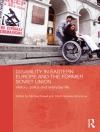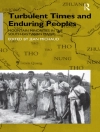The European or Mediterranean cultivated olive (Olea europaea L., subsp. europaea, var. europaea) is an ancient crop notable for its early domestication. Today, hundreds of olive varieties are grown to produce high-quality fruit for oil and table olives for human consumption. Over the last 30 years, the olive industry has undergone profound innovation due to scientific and technical advances, particularly in genomics, breeding, orchard management, mechanization and agro-ecology. Not all these developments are currently available to smaller producers.
Outside the Mediterranean Basin, where it has been present for over 6, 000 years, olive cultivation has spread to many other countries. These new olive-growing areas are helping further the expansion of the industry, due to increased awareness of the nutritional and health properties of extra virgin olive oil.
This book is a much-needed update on olive biology and cultivation, with contributions from leading international experts, and includes:
Genetics and breeding
Olive propagation and nursery
Planting olive orchards
Horticultural management of olive orchards
Plant protection
Olive by-products
Multifunctionality of olive groves and ecosystem services
The Olive: Botany and Production is an invaluable resource for researchers and students in horticulture and agriculture, in addition to producers involved in olive orchard management.
Over de auteur
Fernando Pliego-Alfaro is Professor of Plant Physiology at the the Botany and Plant Physiology Department, Faculty of Sciences (University of Malaga) and researcher of the Subtropical Fruit Crops Department at Instituto de Hortofruticultura Subtropical y Mediterránea La Mayora (IHSM). His research has focused on the development of regeneration and transformation protocols of subtropical and temperate fruit crops such as avocado, olive and strawberry, contributing to establish the bases for biotechnological breeding. His current interests focus on improving tolerance of these crops to soil borne pathogens. He has been involved in numerous research projects and has authored more than 150 refereed publications and book chapters; his postgraduate training activities include supervision of 20 Ph.D. and numerous M. Sc. thesis, of students from different countries.












